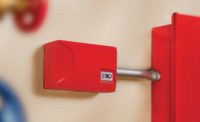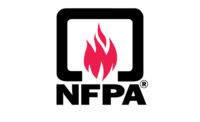There are many code- and standards-regulating bodies that have a say in state and local fire codes, including UL, Intertek and others. But NFPA 72 — the National Fire Alarm and Signaling Code — is arguably the most influential. SDM spoke with Richard Roux, senior electrical specialist at NFPA about recent and upcoming changes to the code one integrator referred to as “the Bible” of fire protection.
SDM: What are some of the technological changes you see reflected in recent editions of NFPA 72?
Roux:There is a lot of pull through of new equipment and integration; but at the end of the day, to us it is about saving lives. Manufacturers of course come up with new, innovative stuff. Today there is a lot more electronics than the mechanical systems of years ago. Things are getting more miniature and simpler and software-based. There is a lot of addressability. Every widget has an address and the system talks to those.
SDM: What has happened with fire alarm communications? Do you see phone lines going away?
Roux:Sending a signal from the panel to the station has been revolutionized since 2007. It was like using a stone wheel that wasn’t quite round, yet was stable because everyone used two hard, copper phone lines. But as copper became scarce and people started going fiber, they started converting signals to other things. Looking at the code, we had to come up with rules for all these new things like fiber, VOIP, Internet connections, radio thorough GSM and other signals. That has been a very difficult thing because of the variety of equipment out there. The code is trying to be forward to technology and get away from the stone wheel of 2007. The 2013 edition covered a lot of stuff but the way it covered it was pretty general because we didn’t want to limit that technology. What the code has done from 2013 to 2016 is in 2013 you needed a phone line and had six other options as secondary. Now there are three methods and we are not allowing two phone lines. We are recognizing phone lines are sunsetting. That is driving things. We probably won’t get rid of phone lines entirely for a long time. There are still a lot of places that have hard phone lines and I don’t see code prohibiting that. But it will permit other, newer options. In general we are maybe 10 years behind in removing things from code that once worked.
SDM: There is a lot of talk about mass communication. What has changed in the code to reflect that technology?
Roux: Mass notification really came into being in the 2010 edition. As we went into 2013 and 2016, we refined it. There is one thing that changed in 2016 having to do with the concept of voice intelligibility. Now you have to have recognizable, clear speech and there are criteria for that. It is becoming much more prominent that you are not just giving a message but that message must be intelligible. The 2016 edition is also for the first time permitting the use of non-listed speakers. But it is specific. If you have a project you have to use listed speakers unless there is a particular area where you can’t achieve the required intelligibility. Also you can’t have conflicting messages. If the fire alarm and mass notification systems are both going off and one is saying leave and the other says stay put, that is conflicting. You need to make one system talk to the other.
Then there is the new Class N alarm circuit. Class N stands for Network. It was really the mass notification end of the business that was pushing to have mass notification speakers where the speaker has an IP address. It sends out some data and you have a speaker giving a message all driven over Cat 5 cable. You can have amplifiers that are addressable, message signs, etc.
SDM: Do you ever think code will allow the use of apps or remote interaction with the panel?
Roux:We don’t drive apps. The marketplace drives that. If someone came up with an app type thing and it was reliable perhaps. But everything you tie in has to be listed. How do you list an app? Where do we go with this stuff? What happens when phone doesn’t communicate with the tower? Or the app doesn’t work? It is important that these things function. We are used to touchscreens and such, but it isn’t on the phone. Can I do this remotely? Then it gets fuzzy.




